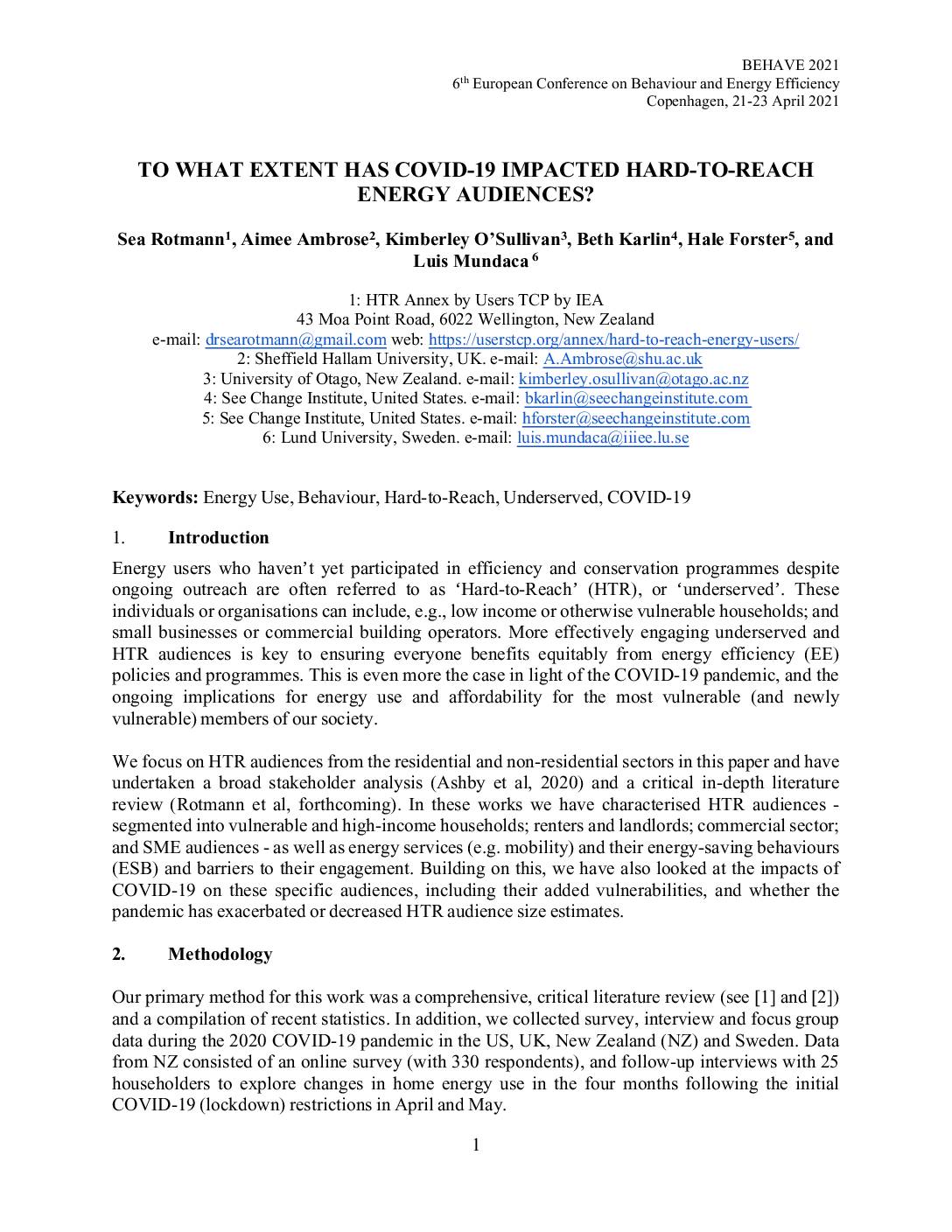Energy users who haven’t yet participated in efficiency and conservation programmes despite ongoing outreach are often referred to as ‘Hard-to-Reach’ (HTR), or ‘under served’. These individuals or organisations can include, e.g., low income or otherwise vulnerable households; and small businesses or commercial building operators. More effectively engaging under served and HTR audiences is key to ensuring everyone benefits equitably from energy efficiency (EE) policies and programmes. This is even more the case in light of the COVID-19 pandemic, and the ongoing implications for energy use and affordability for the most vulnerable (and newly vulnerable) members of our society.
We focus on HTR audiences from the residential and non-residential sectors in this paper and have undertaken a broad stakeholder analysis and a critical in-depth literature review. In these works we have characterized HTR audiences -segmented into vulnerable and high-income households; renters and landlords; commercial sector;and SME audiences – as well as energy services (e.g. mobility) and their energy-saving behaviours (ESB) and barriers to their engagement. Building on this, we have also looked at the impacts of COVID-19 on these specific audiences, including their added vulnerabilities, and whether the pandemic has exacerbated or decreased HTR audience size estimates.
Download sourceShare this

Sectors: Cross cutting, Power sector
Country / Region: Global
Tags: climate vulnerability, education and outreach, energy, energy efficiency, energy services, lighting, paper production, stakeholder analysis, stakeholders, vulnerabilityIn 1 user collection: Session 1b: Hard-to-reach energy users in residential and non-residential sectors and financing
Knowledge Object: Publication / Report
Publishing year: 2020
Author: Sea Rotmann, Aimee Ambrose, Kimberley O’Sullivan, Beth Karlin, Hale Forster, and Luis Mundaca
Content:

